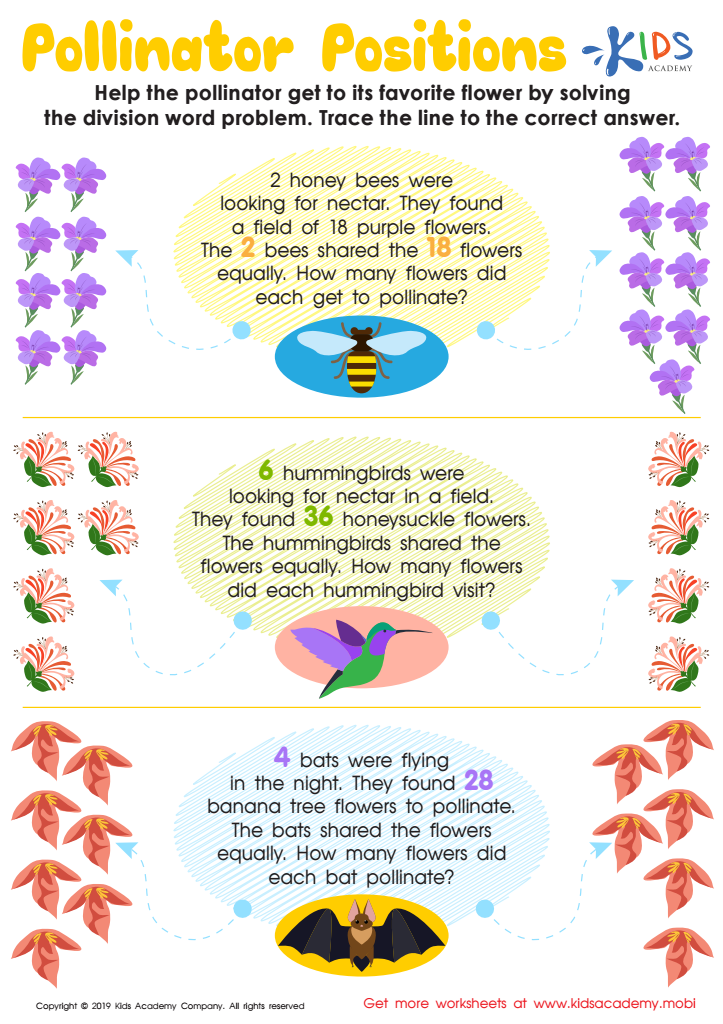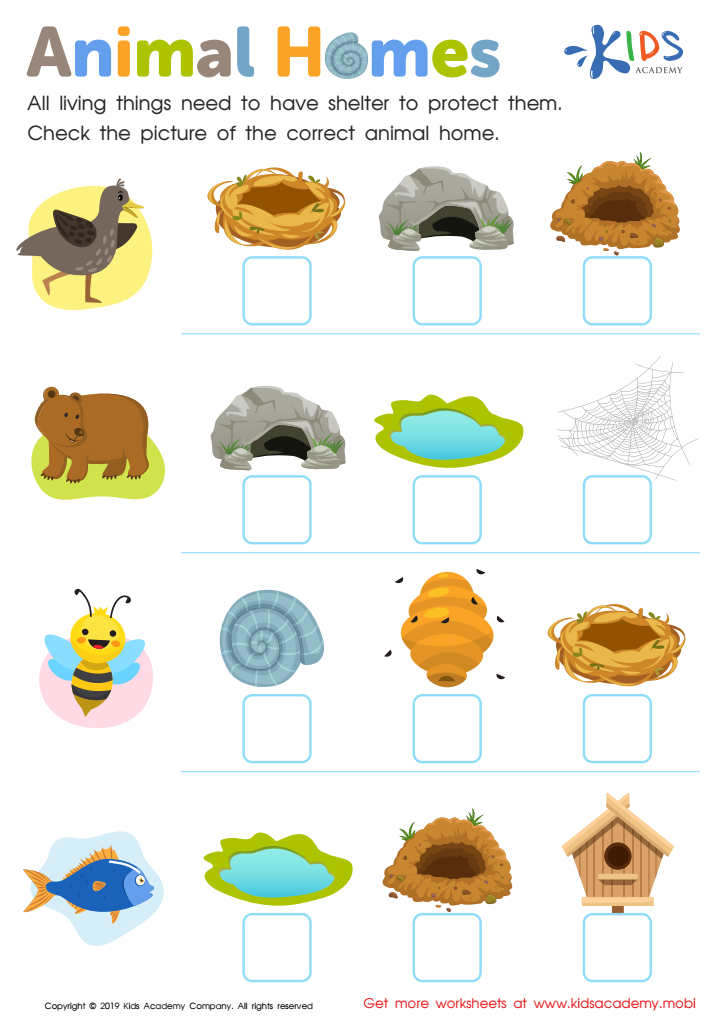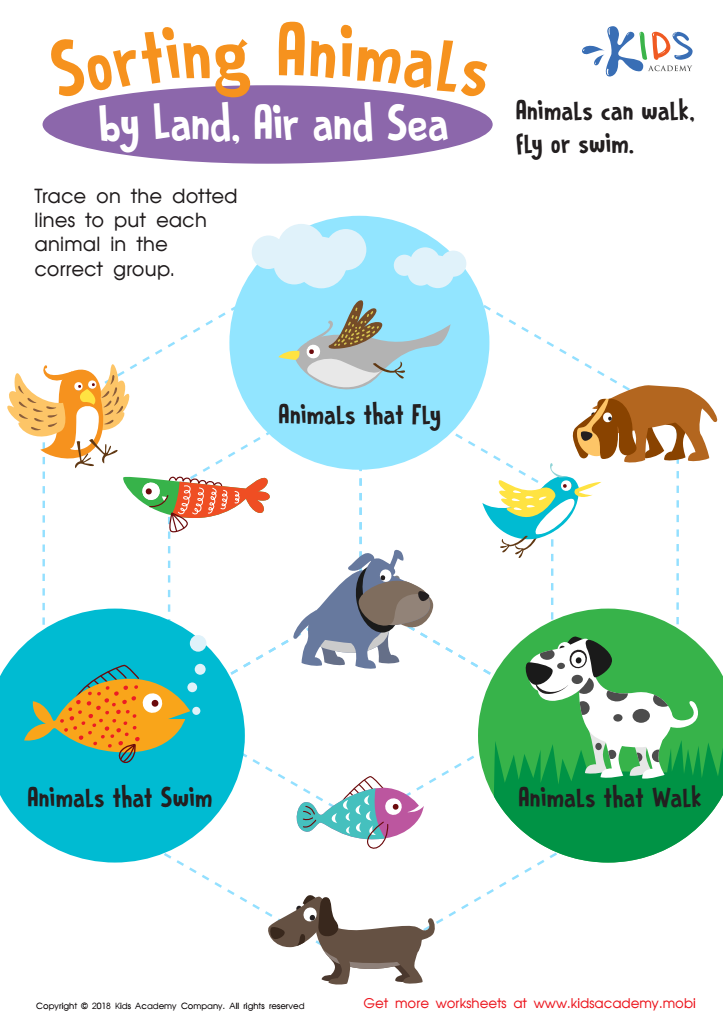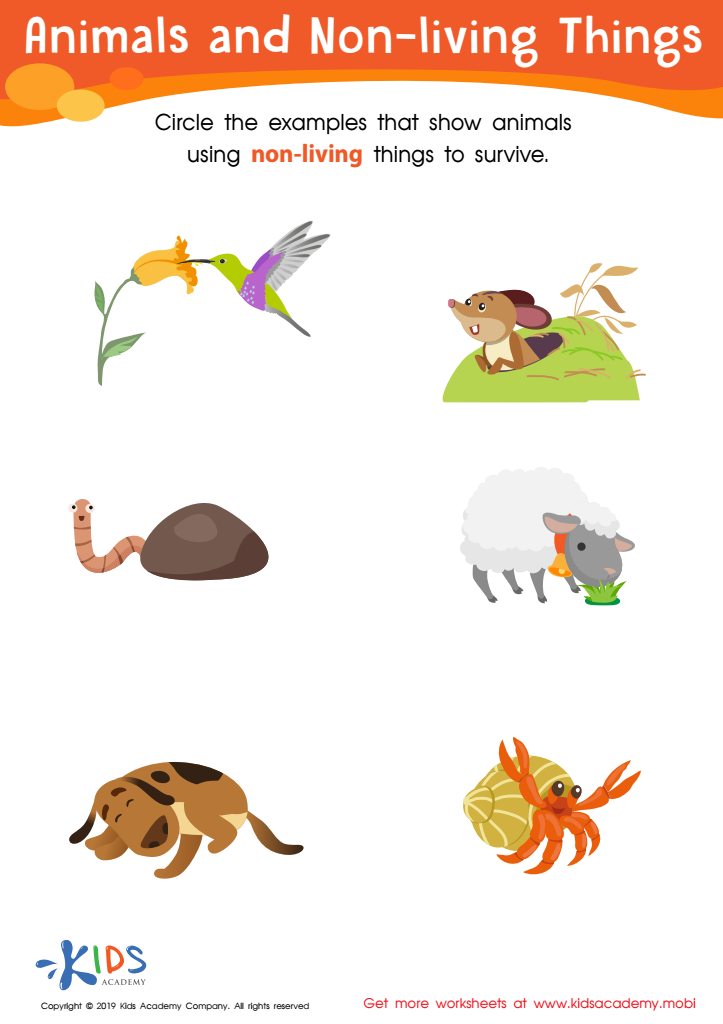Normal Animals Worksheets for Ages 3-4
19 filtered results
-
From - To
Introducing our delightful "Normal Animals for Ages 3-4" worksheets, designed to spark curiosity and joy in young learners. This engaging collection is perfectly tailored to introduce children to the enchanting world of animals they see in their everyday lives. Through a series of fun, age-appropriate activities, kids will explore various animal characteristics, habitats, and behaviors, enhancing their understanding and appreciation of the natural world around them. Our worksheets are crafted with vibrant illustrations and simple, interactive tasks to foster early learning skills, including observation, classification, and fine motor development. Dive into our "Normal Animals for Ages 3-4" worksheets for a fantastic educational adventure!


Mammals and Reptiles Worksheet


African Wildlife: Giraffe Worksheet


Great Migrations Worksheet


Sorting Animals Worksheet




Pollinator Positions Worksheet


Animal Homes Worksheet


Herbivores Worksheet


Animal Homes Worksheet


Fur or Feathers? Worksheet


Sorting Animals by Land, Air and Sea Worksheet


Migrate or Hibernate? Worksheet


Arctic World Worksheet


Identifying Living or Non–living Worksheet


Arctic Animals Worksheet


Where Animals Live Worksheet


Life Cycle of Butterfly Printable


Animals and Non-Living Things Worksheet
Normal worksheets on Animals for Ages 3-4 are an incredibly useful tool for early childhood education. At this critical developmental stage, children are naturally curious about the world around them, and animals often hold a special place in their hearts and imaginations. These worksheets are specifically designed to cater to the interests and learning levels of 3 to 4-year-olds, making them an ideal educational resource.
Firstly, these worksheets help in developing foundational skills such as recognition, matching, and categorization. Children learn to identify different animals, understand their basic features, and differentiate between various species. This not only enhances their vocabulary but also lays the groundwork for scientific thinking.
Secondly, the interactive nature of these worksheets encourages active participation. Whether it's coloring, tracing, or engaging in spot-the-difference activities, children are motivated to engage with the content actively. This hands-on approach to learning improves their fine motor skills while keeping them entertained.
Furthermore, Normal worksheets on Animals for Ages 3-4 serve as an excellent tool for fostering empathy and compassion. By learning about animals, their habitats, and their needs, children develop a sense of care for other living beings. This emotional intelligence is crucial for their overall development.
In summary, these worksheets are not just educational tools; they are gateways to developing cognitive abilities, fine motor skills, and emotional intelligence in young learners. They make learning about animals fun, interactive, and meaningful.
 Assign to the classroom
Assign to the classroom













